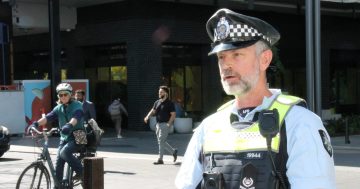
I’ve always been fascinated by the secret codes motorists use to communicate with each other.
It’s like our own little language, or ‘code of the road’. Rarely taught, but generally picked up along the way.
From a very young age, like many of us, I watched as the driving adults in my family gave the all-important wave to acknowledge and thank those who showed courtesy on the road.
Many years later, and while on a road trip with a friend, I learned to briefly flash my headlights to let an overtaking truckie know it was safe to move back into the lane.
This is particularly helpful at night, when distances can be harder to judge.
Give it a try, and chances are you’ll be rewarded with a left-right-left or right-left-right indicator flash as a thank you.
I spent quite some time doing this incessantly, getting a bit of a thrill out of the acknowledgement.
It’s also routine in some countries to flash your headlights before overtaking, just to let the driver in front know what you’re doing. Though isn’t that what your indicators are for?
Here in Australia, flashing your headlights is more often seen as a kind of ‘visual horn’ – done to warn of a hazard ahead or as a (slightly aggressive) way to let another driver know they’ve done the wrong thing by you.
Of course, one of the most common – and not so secret – codes among drivers, and by far the most controversial, is the headlight flash used to warn of a speed camera ahead.
You might think the police would be really unhappy about this, but in fact, Victoria’s Traffic Superintendent was quoted as saying he is comfortable with the practice. From his point of view, the aim of a speed camera is to get you to slow down, and if a flash of the headlights does that instead, it’s all good.
You shouldn’t assume the same leniency in other jurisdictions, though – including the ACT. The rules may vary between states, but generally it’s against the law. You could be hit with a fine and loss of points for inappropriate use of your headlights or even impeding police work.
I must admit, I haven’t seen a truck driver use the speed-camera-warning method, but apparently for them, it’s two flashes rather than just one.
Truck drivers can be very valuable allies on the road. Remember, they’re spending a lot of time out there, and because they’re up so high, they can see much farther ahead than you.
As an example – there’s an interesting and potentially dangerous phenomena called velocitisation.
If you haven’t come across the term before, it describes how – after travelling at high speed for a long time – a driver loses alertness and their ability to accurately judge speed and distance.
Ever had to suddenly slow down for roadworks on the highway? Then you’ve probably felt it.
This can be a real problem if there’s an obstacle, such as roadworks, or maybe a sudden traffic jam.
For this reason, you’ll often find truck drivers will put their hazard lights on when they spot vehicles slowing down ahead. It’s an early warning system for other truckies, and other motorists too.
The truckers code can be more specific too: many truck drivers will flash their headlights three times to warn of some other oncoming hazard.
This may or may not be followed by three flashes of an indicator to let you know which side of the road the hazard is on. Pretty interesting, huh?
On a more poignant note, I also read of a fast-fading practice among truck drivers passing the scene of an accident.
In years gone by, when there was a crash involving a truck, other truckies would form a slow procession for the next 10-20 kilometres after the road opened up, as a mark of respect for their colleague who was injured or killed.
Isn’t that nice? Certainly much better than just rubbernecking at the scene, which is what most of the rest of us do.
Finally, if you’d show more respect on the road, you might take a note out of the Japanese driver’s handbook.
A little while ago, this video popped up in my newsfeed, showing how Japanese drivers courteously thank each other with a quick flash of their hazard lights.
I’d argue our customary Australian wave is just as good. Although anyone who accepts my courtesy and doesn’t give me The Wave back can expect a headlight flash in the least, and more likely, a smiling wave of the middle finger…
Over to you – what secret codes do you use on the road? Have I missed any? Are there any others you’d like to suggest?





















